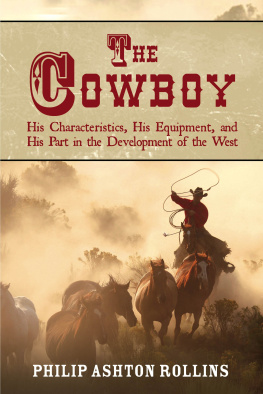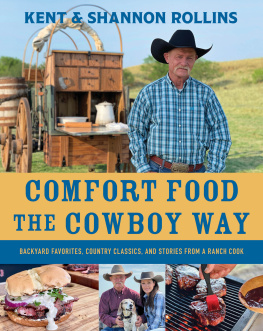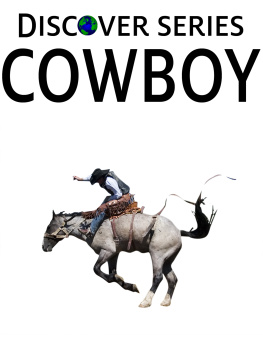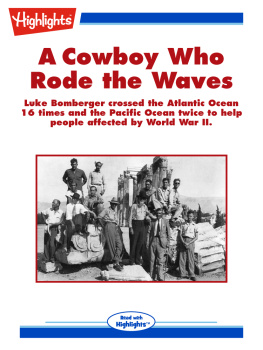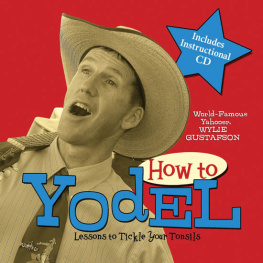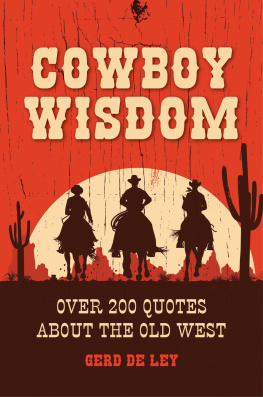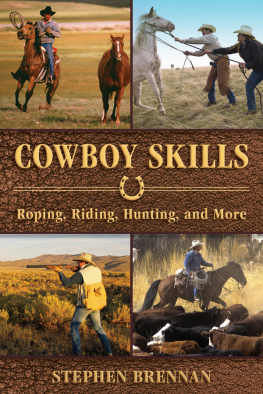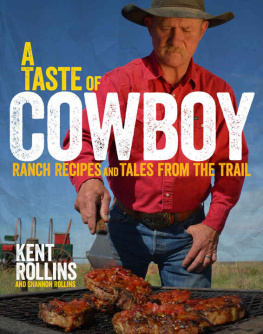CHAPTER I
THE BEGINNINGS OF RANCHING
ORIGIN OF RANCHING, OF ITS EQUIPMENT AND TECHNICWILD HORSESWILD CATTLEINDIAN PONIESBEGINNING OF RANCHING BY AMERICANSOVERLAND TRAIL AND ITS USERSDEVELOPMENT OF RANCHINGTEXAS TRAILVARIOUS DEFINITIONSRAISING OF CATTLE AND HORSES COMPAREDFREE WATER AND GRASSOPEN RANGESELECTING LANDSFENCESUSE OF OPEN RANGERANCHINGS INCOMPATIBILITY WITH FARMINGSOURCES WHENCE RANCHMEN RECRUITEDCHARACTER OF RANCHMENENGLISH CONTINGENTFINANCIAL CAPITALEXTENT OF RANGE.
TO the Mexicans the American cowboy owed his vocation. For his character he was indebted to no one.
He obtained from Mexican sources all the tools of his trade, all the technic of his craft, the very words by which he designated his utensils, the very animals with which he dealt; but, as one of the dominant figures in the development of the United States, he was self-made.
His saddle, bridle, bit, lariat, spurs, and specialized apparel were not designed by him. He merely copied what for generations had been in use below the Rio Grande. The bronco that he rode and the steer that he roped, each reached him only after they, in self or by the proxy of their ancestors, had come northward across that river.
Long before the cowboys advent and in A. D. 1519 and the years immediately succeeding it, the Spanish invaders of Mexico took thither from Europe small lots of horses and cattle. These horses were assuredly the first the American continents had seen since the geological Ice Age, when the prehistoric native horse became extinct; and these cattle very probably were the first upon which those continents had ever looked.
From these imported beasts descended the vast herds which eventually overspread the grazing lands of Mexico, and with countless hoofs pounded the plains of Americas West.
This wholesale multiplication from the initial fifteen military chargers and the original little group of long-horned Andalusian cattle was a matter not of a day, but of years that well-nigh spanned three centuries.
Nor was this overflowing into the present United States a causeless thing. It was planned and supervised by dark-skinned, wide-hatted men to whom Cotapaxi, Montezuma, and, withal, maana were familiar words.
To understand this movement and its incentive one must turn back for a moment to that year 1519 and its Spanish invaders. The latter promptly resolved themselves into Mexican settlers; and, as with successive generations they numerically increased, they, generation by generation, spread and in part crept northward. Each migrating settler took his live stock with him as he moved. At the end of three hundred years the Rio Grande had long since been crossed, and there were firmly established in the southeastern part of present Texas numerous ranches, each covering an enormous acreage and asserting ownership over the great herds that habitually grazed upon it.
The owners of these ranches obtained from them no commercial profit, for the reason that there was no available selling market for their animals. These owners could make of their live stock no disposition beyond satisfying the scant requirements of the haciendas dinner-table, of the local cobbler, and the neighboring saddle-maker, and also beyond insuring that every person on the premises ever would be provided with a riding horse. These requisitions withdrew so little from the herds that each year they markedly increased in size.
Throughout the stretches between the landholdings of the various ranches and throughout the peopleless country to their north were other horses and cattle, either themselves strays from then contemporary herds, or else descendants of strays from prior herds. These outlying animals gleefully led a life of saucy independence, were very numerous, and were claimed by no man. They were the so-called wild horses and wild cattle, having been thus misnamed by early explorers, who had failed to recognize them as issue of domesticated animals.
These wild cattle rarely wandered far above the northerly boundary of what is now the State of Texas; but the wild horses used all the plains as a playground, and were familiar with even the present Canadian border.
From such of these wild horses as were ensnared by the Red Man sprang the Indian ponies, a classification that was fictitious in that it assumed the existence of a special breed.
The owners of these early ranches in present Texas were accustomed to burn or to cut upon their animals marks of proprietorship, but the indolence of the various owners let many of their animals escape this imposition. Thus intermingling with the inscribed animals were others which, being unmarked, did not patently disclose whether they were the property of a rancher or were mere visitors from the wild bands.
The methods and implements employed at these early establishments were so fully developed that, when years afterward Americas West came into existence, it at first adopted these methods and implements in their entirety, and subsequently modified them only in so far as to brand more industriously, break and ride less cruelly, shepherd more carefully, guide both breeding and grazing, and establish sufficient selling markets. Incidentally, these later betterments in methods of breeding and breaking were due largely to Englishmen who, trained in stock-raising, had bid farewell to their home country and had cast their lot in with that of the plains.
But Americas West had not as yet been born, and the Mexicans were the only ranchmen in present southeastern Texas until the year 1821.
In that year there began to trickle into that Texan section from the more easterly part of the continent a scant rivulet of pioneers who were of Scottish and English descent and of colonial American stock, who were quitting their homes in Mississippi, Alabama, Tennessee and elsewhere in the lower valley of the Mississippi River, and who were more or less aimlessly wandering westward. These pioneers, coming upon the Mexican establishments and well pleased with what they saw, settled amid the ranchers they had unearthed; learned to break and ride bucking horses; and, as the most important element of all, provided themselves with an ample supply of branding-irons. These irons so industriously were wielded amid the wild herds as well of horses as of cattle, and, if Mexican accusations be correct, so frequently were rested upon the sides of the accusers unbranded animals that presently these once impoverished American pioneers found themselves in the class of cattle kings. Then they in a desultory way sought for a selling market. They found none within reach, and, dropping thereupon into the easy-going life pursued by their Mexican neighbors, followed it until, long years afterward, a commercial outlet was secured.
They could not sell their animals, for the very simple reason that there were not within reach people to buy them.
To the south lay the waters of the Gulf. Westward were, at the maps bottom, Mexico with its sparse population and its excess supply of live stock; and, at the maps top, only more animals, mile after mile of uninhabited prairie, and then the scant Spanish settlements in faraway present New Mexico and California. Northward lay the great plains, peopleless save for the Indians. Only to the eastward might one reasonably look for opportunity to sell. But there was a wide interval between Texas and the settled portions of the East.
No railways as yet crossed that intervening space.
Nor could animals in quantity march across it. Although it was true that cattle and horses could be driven great distances, they could thus be driven only over territory wherein both nature and the local peoples consented to let them pass. Between Texas and the Mississippi River there was such unfavorable topography and such comparative scarcity of proper herbage as to forbid the transit of large herds. Nor could the beasts as yet elude this bunker by trudging northward to the latitude of benevolent east-bound trails, since hostile Indians, like myriad wasps, flitted to and fro across the route. Thus nature and man conspired to keep the Texan beasts impounded, to prevent Texan ranching from expanding into a national industry, and the Texan cowboy from becoming a national character. This impounding ceased when the Indians were suppressed, and their suppression was directly due to events which presently transpired in a more northerly section of the United States.

